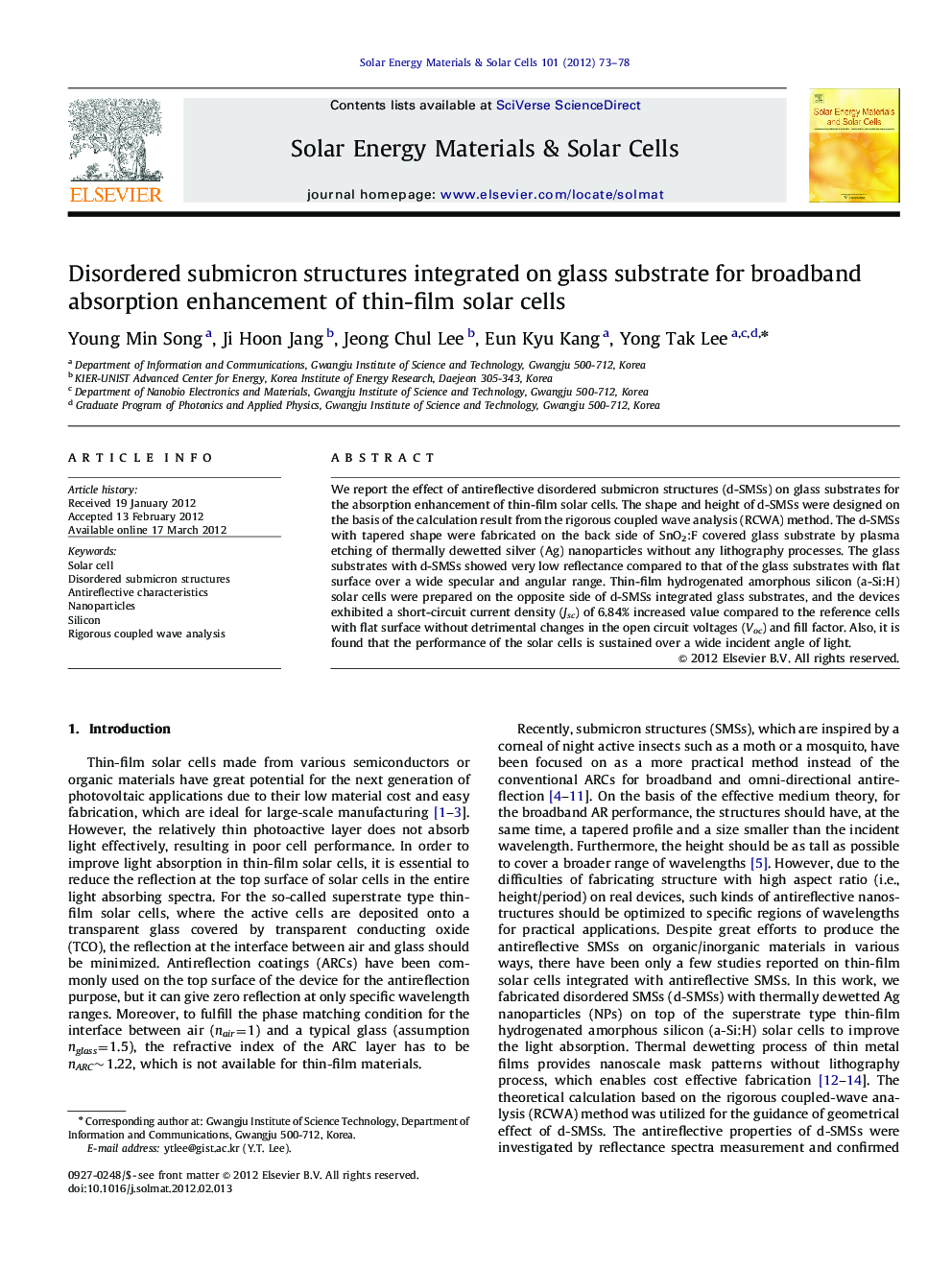| Article ID | Journal | Published Year | Pages | File Type |
|---|---|---|---|---|
| 79278 | Solar Energy Materials and Solar Cells | 2012 | 6 Pages |
We report the effect of antireflective disordered submicron structures (d-SMSs) on glass substrates for the absorption enhancement of thin-film solar cells. The shape and height of d-SMSs were designed on the basis of the calculation result from the rigorous coupled wave analysis (RCWA) method. The d-SMSs with tapered shape were fabricated on the back side of SnO2:F covered glass substrate by plasma etching of thermally dewetted silver (Ag) nanoparticles without any lithography processes. The glass substrates with d-SMSs showed very low reflectance compared to that of the glass substrates with flat surface over a wide specular and angular range. Thin-film hydrogenated amorphous silicon (a-Si:H) solar cells were prepared on the opposite side of d-SMSs integrated glass substrates, and the devices exhibited a short-circuit current density (Jsc) of 6.84% increased value compared to the reference cells with flat surface without detrimental changes in the open circuit voltages (Voc) and fill factor. Also, it is found that the performance of the solar cells is sustained over a wide incident angle of light.
Graphical abstractFigure optionsDownload full-size imageDownload as PowerPoint slideHighlights► Disordered submicron structures (d-SMSs) were developed for absorption efficiency enhancement. ► The fabricated structures showed very low reflectance over a wide specular and angular range. ► Thin-film solar cells with d-SMSs exhibited an enhanced Jsc without detrimental changes. ► The performance of the solar cells was sustained over a wide incident angle of light.
